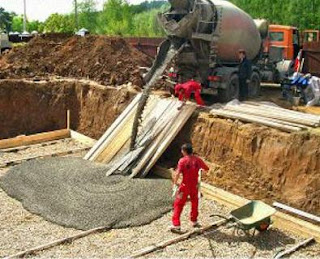Self-compacting concrete (SCC) is a relatively new technology, in terms of construction. Since its introduction over 10 years ago in Japan Stockholm
The complete elimination of the consolidation process in SCC can lead to many benefits. Besides the obvious benefit of improved concrete quality in difficult sites relating to access and congested reinforcements, the use of SCC increases productivity, reduces the number of workers on site, and improves working environment. The reduction in overall construction cost could be around 2 to 5%. Depending on competition, the supply cost of SCC could be from 10 to about 50% higher than that of conventional concrete of similar grade. This leads to the low consumption of SCC in practice amounting to less than 5% of total concrete production. With improved quality control by suppliers and increased competitiveness in the market, the use of SCC is accelerating in many developed countries.
 |
Use of High-performance admixtures
(ZPP-1 and ZPP-2) to decelerate slump loss of self-compacting concrete mixtures |
The rheology of fresh concrete is most often described by the Bingham model. According to this model, fresh concrete must overcome a limiting stress (yield stress, to) before it can flow. Once the concrete starts to flow, shear stress increases with increase in strain rate as defined by plastic viscosity, m. The target rheology of SCC is to reduce the yield stress to as low as possible so that it behaves closely to a Newtonian fluid. The other target property is “adequate” viscosity. The addition of water reduces both the yield stress and viscosity. Too much water can reduce the viscosity to such an extent that segregation occurs. The incorporation of superplasticizer reduces the yield stress but causes limited reduction in viscosity. The use of Bingham parameters is useful in describing the behavior of fresh concrete, but there is no consensus, at least at this stage, on their limiting values appropriate for SCC.
For site quality control, tests requiring simple equipment are often performed to indicate qualitatively or quantitatively the three basic properties of SCC: filling ability, passability, and segregation resistance.
Slump-flow test is the most popular test method used because of it simplicity. A representative sample of concrete is placed continuously into an ordinary slump cone with a jug without tampering. The cone is lift and the diameter of the concrete (i.e., slump flow value) after the concrete has stopped is measured.
The time to reach a flow diameter of 500 mm and final flow diameter are also noted. The degree of segregation can be judged to a certain extent by visual observation. This test reflects the filling ability, but the passability is not indicated. L-box, U-box, and V-funnel are other common tests available to assess one or more of the basic properties of SCC.
No comments:
Post a Comment